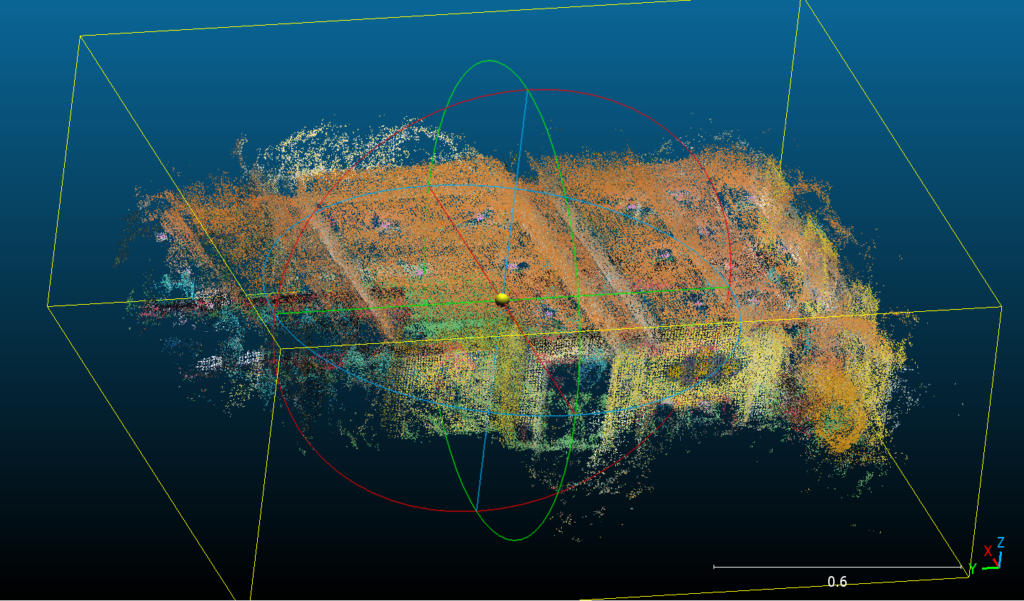Let’s start with the basics. Photogrammetry, derived from the Greek words “photos” meaning “light” and “gramma” meaning “measurement,” is essentially the science of measuring from photographs. It’s a wizardry that extracts measurements from 2D images, whether snapped from the ground or the air. Imagine a world where every photograph becomes a treasure trove of precise data.
Unlocking the Potential of Photogrammetry: Application in Construction Progress Monitoring

In the bustling world of construction, where precision and efficiency dance a delicate tango, technologies emerge as unsung heroes. One such hero making waves is photogrammetry, a powerful tool that has transformed the way we capture and analyze construction sites. Join us on a journey through the evolution of photogrammetry and discover how it’s reshaping the construction industry.
What is Photogrammetry, Anyway?
The Triangulation Principle: How Photogrammetry Works
The basic principle behind photogrammetry —triangulation. This technique, borrowed from surveying and navigation, calculates distances between points by measuring angles between them. In the realm of photogrammetry, it’s used to determine distances in an image by measuring angles between corresponding points in different images. The result? A splendid three-dimensional (3D) model carved from a series of two-dimensional (2D) images. Precision, thy name is photogrammetry.
A Glimpse into Photogrammetry's Historical Odyssey
Our journey takes a historical turn to the late 1800s when photogrammetry made its debut in land surveying. Picture this: a manual process involving rulers, compasses, and the careful tracing of contours on aerial photographs. Fast forward to World War I, and the stage is set for stereo photography—capturing two photos from slightly different angles to create a 3D image. With the help of this invention, commanders could better organize their strategies on the battlefield.
As the decades rolled by, the digital era ushered in automated systems for processing aerial photographs in the 1950s and 1960s. Digital imaging technology in the 1980s and 1990s propelled photogrammetry into a new era, making 3D reconstructions even more accurate. Today, we stand at the cusp of the future, where machine learning and artificial intelligence promise advanced data interpretation and object recognition.
Why Photogrammetry Holds the Aces in Construction
Now, let’s switch gears to the heart of the matter—construction. An industry pulsating with data requirements, where a single misstep can set off a chain reaction of delays and rework. Enter photogrammetry, the unsung hero of construction progress monitoring.
Precision Beyond Measure:
Imagine a tool that provides more accurate measurements than traditional survey methods. Photogrammetry achieves just that. By relying on actual physical measurements rather than estimates, it minimizes waste and enhances construction efficiency.
Swift Solutions, Cost-Effective Measures:
Time is money in construction, and photogrammetry emerges as the swift, cost-effective option. Compared to traditional survey methods, it’s a speedster, making it particularly attractive for smaller to medium-sized projects.
A Visual Symphony in Detail:
Photogrammetry doesn’t just measure; it captures. Imagine extremely detailed images of construction sites and objects. It’s a documentation wizard, capturing progress, identifying issues, and facilitating post-project analysis.
Applications: The Photogrammetry Showcase in Construction
Now that we’ve uncovered the charm of photogrammetry, let’s explore its applications in construction.
Architectural Precision Guardian:
Photogrammetry steps up as the architect’s ally, accurately measuring the dimensions of structures and buildings. This data becomes the blueprint guardian, ensuring structures align with the grand design.
Chronicles of Construction:
What if you could track construction progress with the precision of a master clock? Photogrammetry does just that. It becomes the storyteller, documenting every twist and turn in the construction tale, ensuring plans align with reality.
Unleashing 3 Dimensions:
Photogrammetry’s pièce de résistance is the creation of 3D models. Whether with drones capturing entire sites or without, crafting detailed 3D models becomes a breeze. It’s like having a digital twin of your construction masterpiece.
Assess, Repair, Repeat:
Storms, incidents, or unexpected turns—photogrammetry steps in to assess the damage. It accelerates the process of evaluating and repairing, saving both time and money.
The Dynamic Duo of Digital Capture and Software
As technology takes center stage, we delve into the tools and software that make photogrammetry a reality in construction.
Digital Eyes and Wings:
Cameras and drones, the dynamic duo of photogrammetry. They capture the essence of construction sites, turning images into data. Drones, especially, elevate the game, creating 3D models at breakneck speed.
Construction Projects with Powerful Software:
Behind the scenes, software like Pix4Dmapper, Autodesk Recap, and Photoscan work their magic. They transform images into actionable data, giving life to construction projects in the digital realm.
Challenges and Limitations: Navigating the Photogrammetry Landscape
Like any hero, photogrammetry faces challenges. Yet, these challenges are not insurmountable.
Measurement Precision:
Precision in Image Measurements relies on the careful consideration of camera calibration, object size, image resolution, and lighting conditions. Achieving accuracy requires attention to these crucial factors.
The Environmental Challenges:
Construction sites can be tumultuous environments. Dust, smoke, movement, and vibrations—they all pose challenges. Yet, with higher-resolution cameras and strategic setups, these challenges can be overcome.
The Future of Photogrammetry in Construction
As we conclude our journey, the road ahead unfolds with possibilities. Photogrammetry, holds the promise of a digitalized construction era. Its applications are boundless, from real-time progress monitoring to site analysis to quality control. The story is still being written, and as technology evolves, so does the role of photogrammetry in the construction saga.
If you’re considering incorporating photogrammetry into your next construction project, the future is now. Reach out to us at constructN.ai, where we leverage the power of photogrammetry for superior construction site monitoring. As the construction industry steps into the digital age, let photogrammetry be your guiding light.